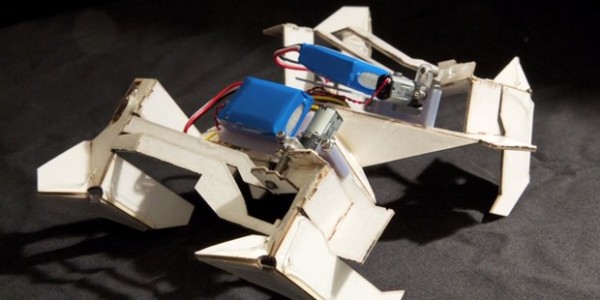If you have ever tried to fold one of those little paper cranes, you know how intricate and delicate the art of Origami is. The process of Origami is often meditative, focusing on precision folds to make the mundane remarkable. What if Origami was automated? What if the paper folded itself? What if that self-folding paper stood up and scuttled away? This might sound like science fiction or some sort of artsy witchcraft, but self-folding robots are a reality.
Origami inspired engineers at Harvard and MIT have developed robots that can essentially build themselves. These robots start out as flat sheets of plastic with a tiny heater attached. Using highly-sophisticated Shrinky Dink technology and strategically placed creases, these robots take shape without human interference.
A need for speed was part of the inspiration for these self-folding automata. These robots can be created with a 3D-printer, and once the heater is attached the robots take it from there. The goal is apply this technology to other materials, and other designs. Basically anything that can be created through folding can benefit from this technology.
At the moment there’s the hope that this automated Origami can be used for search and rescue or satellites, but it’s a little too early for that. This technology is still experimental, so it might be a little while before there are any useful applications for these self-folding robots. A swarm of scampering robots might be great fun, but they’re not going to change the world.
However it make an impact on manufacturing. Self-folding technology has the potential to be incredibly efficient and cost-effective. You could design a chair with 3D-printing software, hit the print button, and equip the flat chairs with heaters. They could be shipped cheaply and easily, and the consumer wouldn’t have to assemble the thing it arrived at their home.
It could be a long time before this self-folding technology is used on a commercial level, but it’s an exciting concept!
